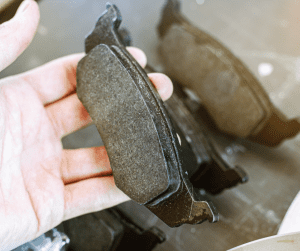How Check Car Brakes
Regular brake checks are crucial for maintaining your vehicle's safety. Follow these simple steps to perform a brake check, including a visual inspection
How Check Car Brakes

**Safety Reminder:**
Always exercise caution when working around a running vehicle. If you’re uncertain about any aspect of the brake check, or if you notice any unusual symptoms, consult a qualified mechanic immediately.
How to Perform a Quick Brake Check on Your Car
At Car Friend, we’re here to ensure your safety on the road. Regular brake checks are crucial for maintaining your vehicle’s safety. Follow these simple steps to perform a brake check, including a visual inspection:
**Step 1: Find a Safe Location**
Ensure you’re in a safe and level area away from traffic before starting the brake check. A flat driveway or an empty parking lot is ideal.
**Step 2: Engage the Parking Brake**
Make sure your car is in “Park” (automatic) or in first gear (manual), and engage the parking brake to prevent any movement.
**Step 3: Start the Engine**
Turn on your car’s engine. This will allow you to test the brakes with the power assist.
**Step 4: Test the Brake Pedal**
Press the brake pedal gently with your foot. It should feel firm, not spongy. If it feels spongy, there might be an issue with your brake fluid or brake lines.
**Step 5: Listen for Unusual Sounds**
While gently pressing the brake pedal, listen for any unusual sounds such as squealing, grinding, or scraping. These noises could indicate brake pads or Disc wear.
**Step 6: Check for Brake Fluid Leaks**
Inspect the area under your car for any signs of brake fluid leaks. Brake fluid is usually clear or slightly yellowish, so any puddles should be addressed immediately.
**Step 7: Visual Inspection**
Without removing the wheel, visually inspect your brake components. Look for:
– **Brake Pads:** Through the openings in your wheel, check the thickness of your brake pads. If they are less than 3mm thick, it’s time for a replacement. Top Tip – A torch is really handy for this bit!
– **Brake Discs/Rotors:** Examine the brake discs for deep grooves or scoring. If they appear severely worn or damaged, it’s time for a replacement.
**Step 8: Observe Brake Warning Light**
Keep an eye on your dashboard for the brake warning light. If it stays lit or flashes while you’re performing the check, it’s a sign of potential brake problems. Some cars are fitted with brake pad warning lights that will indicate that the life of the brake pads is near, This is a little sensor built into the pad and when the brake pad surface gets low it triggers the light on your dash.
When to Seek Professional Assistance
If you notice any of the following issues during your brake check, it’s advisable to seek professional assistance:
– Excessive wear on brake pads.
– Severe damage or wear on brake discs/rotors.
– Unusual noises or vibrations when braking.
– Brake fluid leaks.
– Brake warning light stays on or flashes.
Regular brake checks are essential for your safety on the road. If you notice any problems during your brake check, don’t hesitate to contact Car Friend for a professional inspection and repair.
If you’re unsure about your brake condition or want a professional inspection, contact Car Friend today. We offer a complimentary vehicle health check to ensure your safety on the road. Let us be your trusted guide to keeping your car in top shape.
Our Location
Find Us
Unit 17 Norton Canes Business Park
Norton Green Lane
Norton Canes, Cannock
Staffordshire
WS11 9SS
01543 27 60 60
Opening Times
| Monday | 08:00 - 17:00 |
|---|---|
| Tuesday | 08:00 - 17:00 |
| Wednesday | 08:00 - 17:00 |
| Thursday | 08:00 - 17:00 |
| Friday | 08:00 - 17:00 |
| Saturday | By Appointment |
| Sunday | Closed |
Car Repairs & Services
- Auto Electrics
- Cambelts
- Car Air Conditioning
- Car Batteries
- Car Body Repairs
- Car Brakes
- Car Exhausts
- Car Modifications
- Car Repairs
- Car Safety Checks
- Car Servicing
- Car Tyres
- Classic Car Repairs
- Classic Car Restoration
- Classic Car Service
- Clutch Replacement
- Courtesy Car
- Dent Removal
- Engine Diagnostics
- Engine Management
- EV Repairs & Servicing
- Fleet Maintenance
- Fuel System Cleaning
- Hybrid Repairs & Servicing
- Mechanical Repairs & Investigations
- MOT
- Motor Oil
- Suspension
- Vehicle Recovery
- Vehicle Welding
- Wheel Alignment / Tracking
- Wheel Balancing
- Windscreen Wash
- Windscreen Wipers
- All Car Repairs & Services…
© Car Friend - 2024












